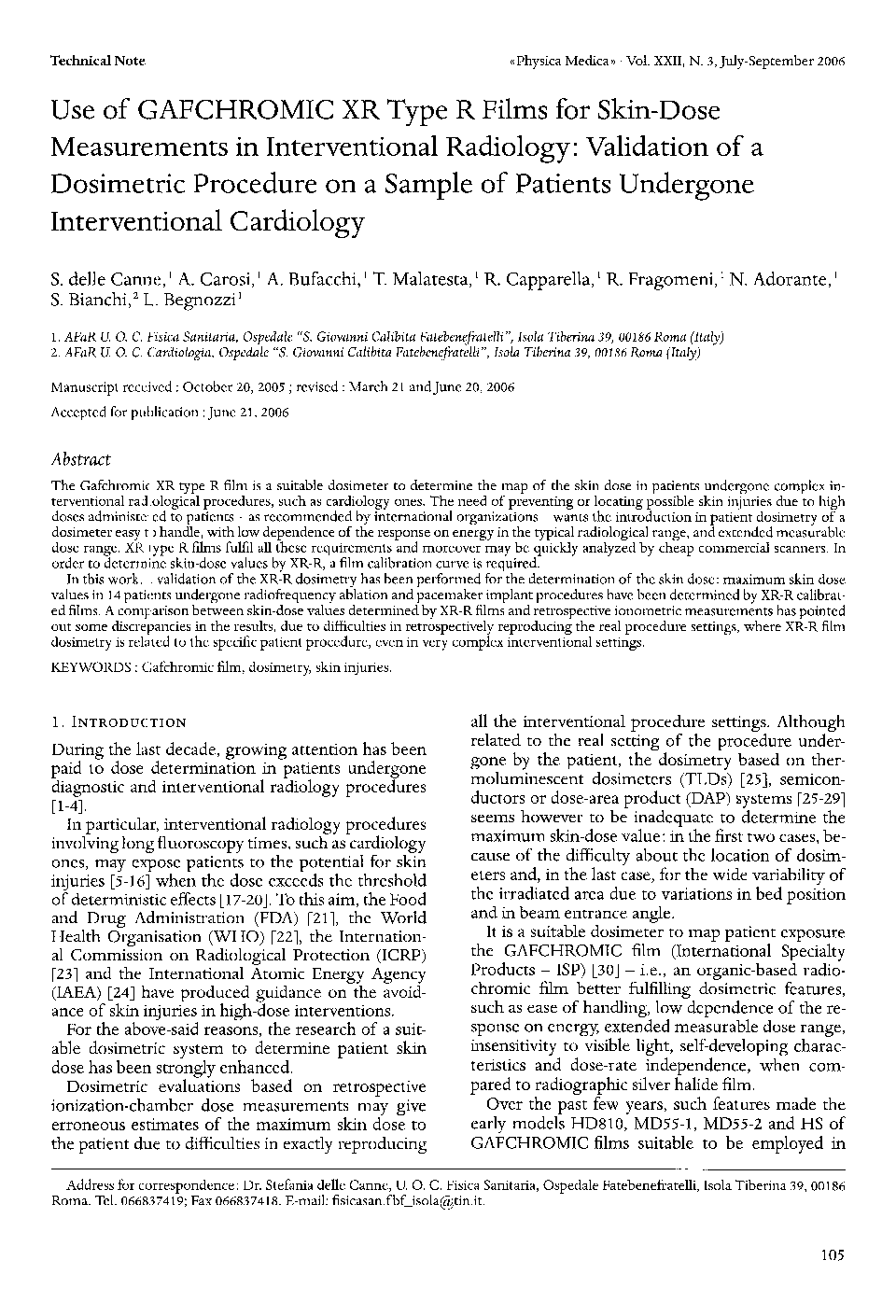| کد مقاله | کد نشریه | سال انتشار | مقاله انگلیسی | نسخه تمام متن |
|---|---|---|---|---|
| 1887900 | 1043629 | 2006 | 6 صفحه PDF | دانلود رایگان |

The Gafchromic XR type R film is a suitable dosimeter to determine the map of the skin dose in patients undergone complex interventional radiological procedures, such as cardiology ones. The need of preventing or locating possible skin injuries due to high doses administered to patients—as recommended by international organizations—wants the introduction in patient dosimetry of a dosimeter easy to handle, with low dependence of the response on energy in the typical radiological range, and extended measurable dose range. XR type R films fulfil all these requirements and moreover may be quickly analyzed by cheap commercial scanners. In order to determine skin-dose values by XR-R, a film calibration curve is required.In this work, validation of the XR-R dosimetry has been performed for the determination of the skin dose: maximum skin-dose values in 14 patients undergone radiofrequency ablation and pacemaker implant procedures have been determined by XR-R calibrated films. A comparison between skin-dose values determined by XR-R films and retrospective ionometric measurements has pointed out some discrepancies in the results, due to difficulties in retrospectively reproducing the real procedure settings, where XR-R film dosimetry is related to the specific patient procedure, even, in very complex interventional settings.
Journal: Physica Medica - Volume 22, Issue 3, July–September 2006, Pages 105-110